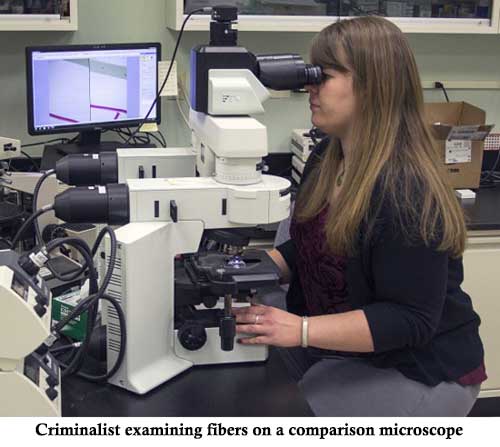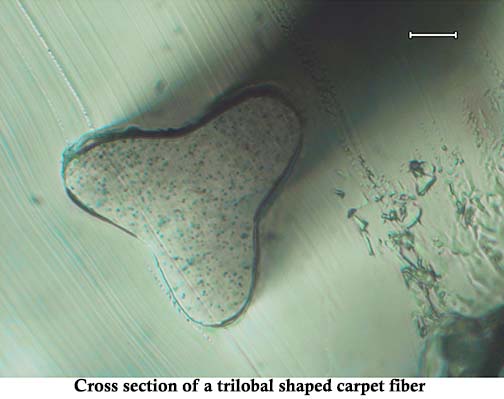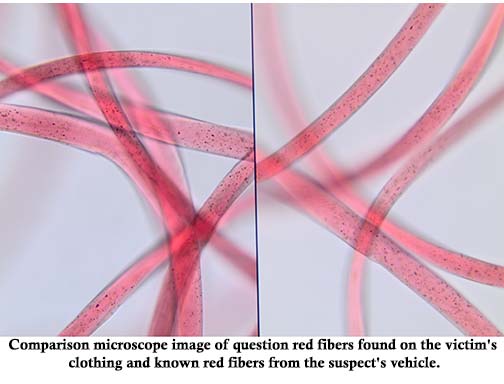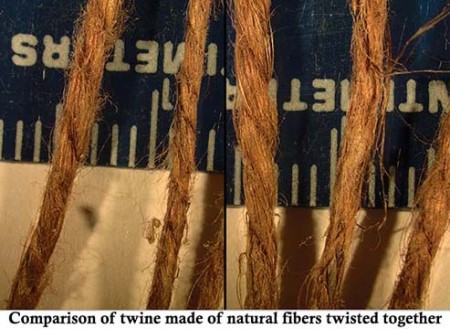Fibers

Fiber transfer can occur when contact occurs between individuals or objects. For example, clothing fibers from a pedestrian may transfer to an automobile when struck by an automobile. The fibers from the automobile can then be compared to the pedestrian's clothing to provide evidence that the automobile struck the pedestrian. Fiber comparisons arise in other types of cases such as homicides, assaults and sexual assaults. Fiber transfers are compared to a known fiber standard to establish an association between two or more persons, or between a person and either a crime scene or an object.
There are many different types of fibers. Fibers can be classified as natural, like cotton, wool and silk or synthetic, like nylon, acrylic and polyester. The color, shape and chemical composition of the fibers are used to compare an unknown fiber sample to a known source.
Fiber examinations are performed using polarized light microscopy, color analysis on Microspectrophotometry (MSP), and Fourier transform infrared spectrometry (FTIR).



Updated August 11, 2020